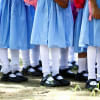Why are we failing to save our children?

We are gravely concerned about the unexpected rise in the infant mortality rate in Bangladesh. According to a new government study, deaths of children under five increased to 31 per thousand last year from 28 in 2021, 2020 and 2019. And deaths of children under one increased to 25 per thousand from 22 per thousand. Despite making significant strides over the past decades, this recent increase in child mortality marks a step backwards in achieving our Sustainable Development Goal (SDG) of reducing under-five mortality to at least as low as 25 per thousand live births. The health ministry has also set a target to reduce under-five mortality to 20 by 2035. Experts say the latest figures highlight a lingering gap in child healthcare services in the country, which requires urgent attention and action from healthcare officials.
Though reasons behind the rise were not analysed in the latest study, the project director noted that in 2021, pneumonia was the leading cause of infant death, along with jaundice, diarrhoea, malnutrition, acute respiratory infection, and drowning. Experts stated that over 24,000 children in the nation die from pneumonia each year, which can be prevented through an integrated development of the healthcare system. Regarding malnutrition, another recent study in May also showed that 50 percent of children are consuming unhealthy, processed foods. And according to WHO and Unicef, as many as 38 children die every day from drowning, which can be prevented by low-cost solutions such as awareness programmes in local communities.
With such staggering statistics but available solutions, it is now time for policymakers to open their eyes and take a comprehensive approach to address the reported causes of children's deaths in the nation. We urge the officials to take the latest study seriously and launch the required interventions in child healthcare facilities, which also accounts for the socioeconomic inequity in infant survival. Studies have shown that a household's income status and the region's administrative division are potential risk factors of infant deaths. Officials must recraft a more holistic strategy, with community-based facilities and awareness programmes to promote healthier lives for all our children.

 For all latest news, follow The Daily Star's Google News channel.
For all latest news, follow The Daily Star's Google News channel. 






Comments